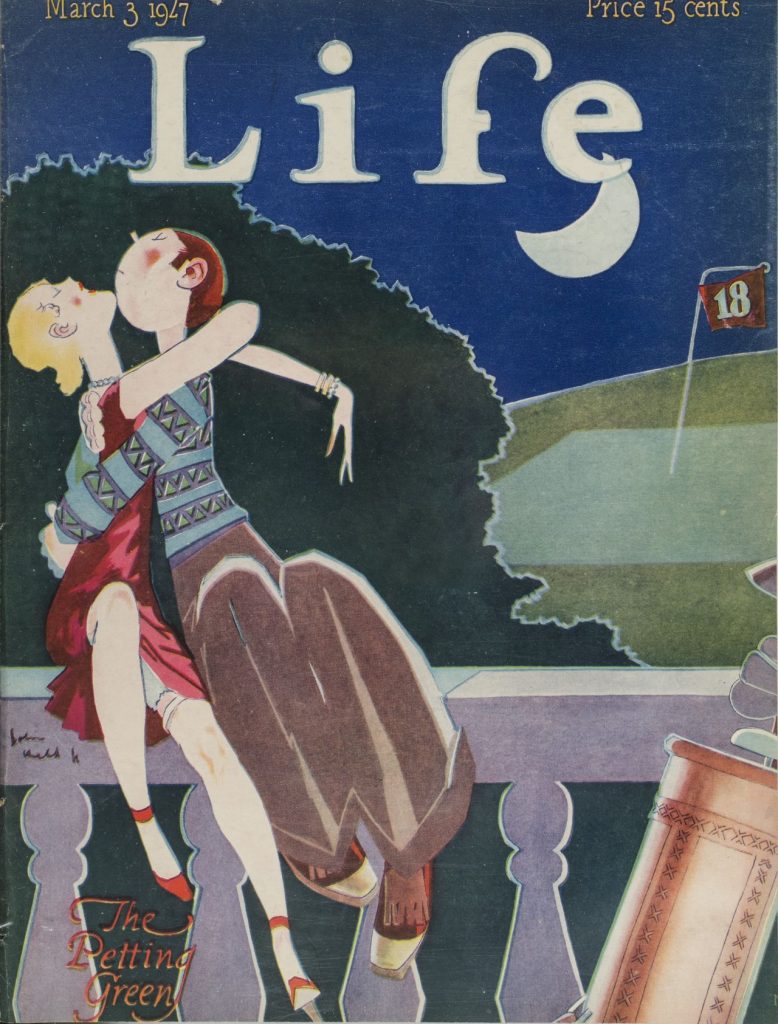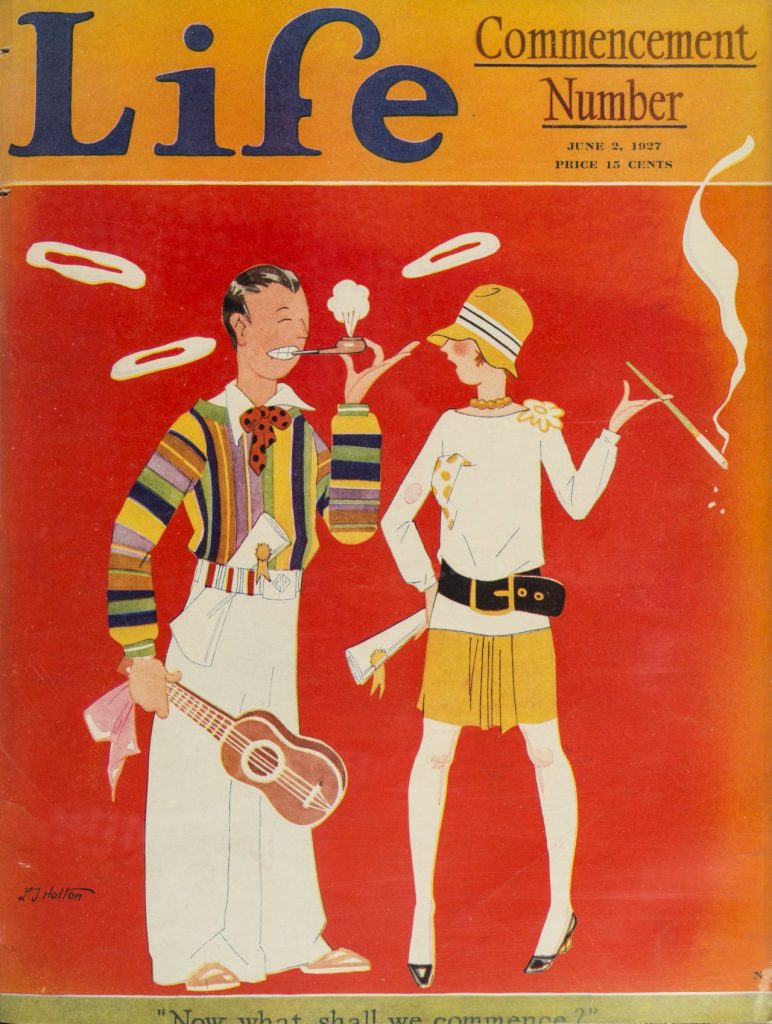Background
The lives of young women in the 1920s were significantly different than earlier generations. The growing mass market allowed women of all background to adopt the latest styles. But the physical differences in terms of dress, hair, and makeup were just symbols of a deeper cultural shift.
Shifting attitudes about social interactions and sex changed the relationship between young women and young men, and between young women and their parents. Unlike their mothers’ generation, young women in the 1920s embraced their independence in body and in spirit. They eagerly demonstrated their freedom in an outward way. They danced, smoked, drank, dated, kissed, and wore revealing clothing. Although most young women still aspired to the traditional goals of marriage and motherhood, they wanted to do it on their own terms. They believed that a romantic and companionate marriage—one where husband and wife loved one another and worked together as a unit—was achievable. They also believed that—like men—they had the right to explore their options first. They wanted to date, have sex, go to college, and enjoy life as a single person before settling down.
The term “flapper” refers to young women who adopted this lifestyle, much to the dismay of older generations and more conservative citizens. But it also refers to the stereotype that such women inspired.
About the Image
Life magazine in the 1920s was a magazine with a circulation around 250,000. It was a humor magazine that catered to an educated, middle-class consumer. The flapper was one of its favorite topics.
These images demonstrate how the mass media viewed the flapper. On one hand, the women in these images are engaging in behaviors that were common at the time: drinking alcohol, dating, going to college, smoking, and wearing “boyish” clothing. On the other hand, they are a male fantasy of a female stereotype. These illustrations poke fun at young women. The humor factor demonstrates the challenges young women faced. Their independence was considered fleeting and nonthreatening. Instead of representing a significant shift in women’s sexual and social identities, flappers were often perceived as comical side effects of youth.
Vocabulary
- bobbed hair: A short haircut for women.
- companionate marriage: A marriage or partnership in which both people are equals.
- conservative: Traditional or old-fashioned.
- consumer: Someone who buys things.
- flapper: A young woman in the 1920s who lived an independent lifestyle. This term was applied to both real women and stereotypical depictions of young women.
- fleeting: Quickly passing.
- Progressive Era: A period of American History between 1889 and 1920 that was defined by intense political activism and social upheaval. See Modernizing America to learn more!
- stereotype: A popular but oversimplified version of a type of person or thing. Stereotypes are often offensive and meant to mock the subject.
Discussion Questions
- What do you see or notice in these images? What are the women doing?
- What do these activities tell us about flappers? How did they behave in society?
- Several of these images show women with men in public. Why do you think this is significant? What does this tell us about the flapper?
- One image includes a flapper obtaining alcohol. What does this say about the connections between youth culture and Prohibition?
- Another image shows a flapper graduating from college. Why do you think education was so important to women who adopted the flapper lifestyle?
- How can you tell these images are meant to be funny? What are the illustrators saying about these women? What does this tell you about the challenges young women faced as they embraced new freedoms?
Suggested Activities
- Compare these illustrations with the photographs of young women wearing new beauty and fashion styles. How does the combination provide a clearer picture of youth culture at the time?
- Compare this illustration to a Life magazine illustration from 1913 of a middle-class housewife. How are these images different? How do they represent the shift from Progressive Era reform to Jazz Age consumerism and social freedom?
- Pair the cover illustration of the flapper in search of alcohol with additional materials about Prohibition to deepen students’ understanding that topic.
- Compare the image of a flapper and her male companion at commencement with the photograph of female MIT students in 1888. How do these two images provide different views of the college experience and the typical college student?
- Pair these images with the illustration Together for Home and Family, which depicts a man and woman holding hands as equals. How does each resource speak to the ideal of companionship and equality between the sexes?
Themes
AMERICAN CULTURE









